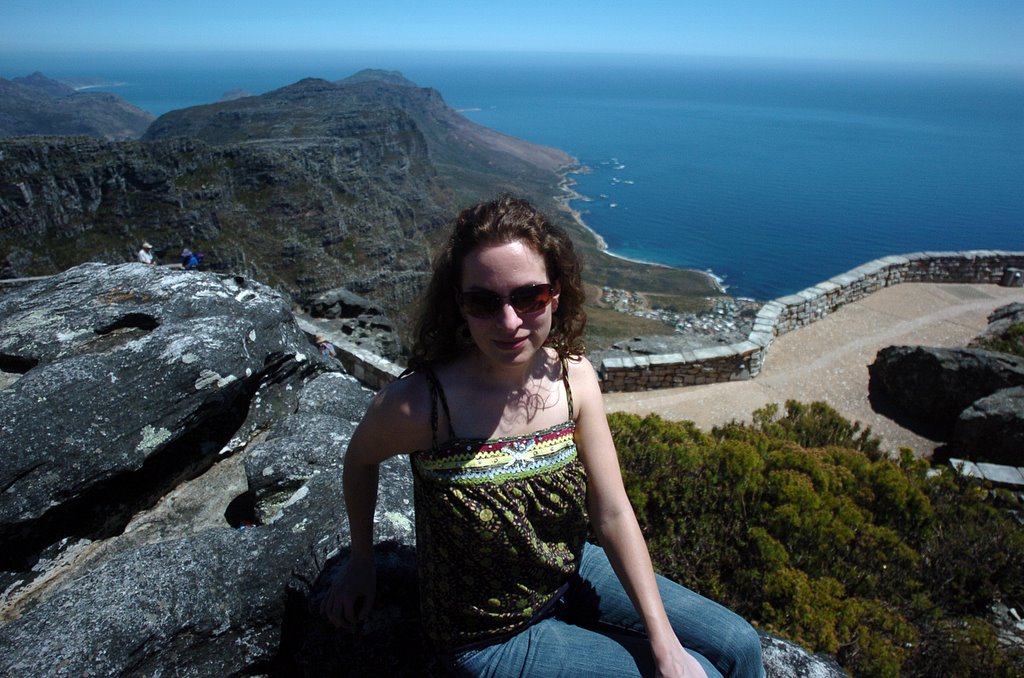Spirit of South Africa w/photos




Don't get me wrong: it's not all doom and gloom there. In fact, we were both struck by the social complexity and sense of hope and optimism only 15 years after the end of apartheid.
We saw a very moving symbol of this attitude during our visit to the Robbin Island prison, where Nelson Mandela was imprisoned for the better part of two decades. During a tour, we stopped at the hottest part of the island, at the bottom of a limestone quarry, where Mandela and 31 other men were forced to work in the ruthless sun for years. Many of them developed vision and breathing problems because the dust from the limestone got in their eyes and lungs. In the limestone wall was a cave about the size of a two-car garage. Inside this cave is where the men went to the bathroom. They were forced to dig holes and use them as toilets. But, with 32 men all using the tiny space, they invariably wound up digging up another man's waste. They were not allowed to wash their hands before they were forced to eat in the same room they used as a bathroom. This was all designed to break the men's spirits and halt their push for democracy. But, instead of succumbing to these twisted mind games, the men remained strong and used the room of torture as a sanctuary in which they discussed democracy and plotted out the future. After the fall of apartheid, the former prisoners of Robbin Island met in the quarry and each placed a rock from the quarry on a pile started by Nelson Mandela. After more than 1,000 former prisoners had added to the pile, Mandela said: Let this be a monument not to our suffering, but to hope. Let this be an example of the best of the human spirit. Can you imagine? That blew my mind. Beautiful.
And Shashi, you asked about the presence of the U.N. in the townships: we did not see the U.N. or any other international aid agencies (to be fair, we were only there for one day). But, let me tell you about the man who conducted our tour, Sam. Sam grew up in the Langa township. He was the fifth of nine children, which gave him an advantage; as his older brothers and sisters found work, they were each able to contribute toward the household and toward his schooling. This enabled him to attend a boarding school and go on to college, where he earned a business administration degree. In turn, he has helped his younger siblings get an education and gives back to the community through his tour business. For example, he took us to visit a center that began as a children's hospital and blossomed into a trade center for the children's moms, where the women learned to weave beautiful rugs and tapestries and sell them. All of us on the tour made purchases there.
As much as it's not all doom and gloom, it's not all hunky-dory. During our tour, we also saw the site where American exchange student Amy Biehl, who was working on a voter registration project, was beaten and stabbed to death. She wound up at the the wrong place at the wrong time: her path crossed that of a rally by radical Pan Africanist Congress members who were militant and believed they could get redress of their grievances from the former apartheid government through violence against whites. The perpetrators were brought to trial and faced the death penalty (which has since been abolished in SA). Bieh's parents were asked to weigh in on the men's sentences; they asked that the men's lives be spared. Instead, her parents created a foundation to further her work, rehabilitate prisoners and expand literacy; the men now work with Biehl's parents through the foundation. Here is an excerpt I found on a Web site about Biehl (http://www.rjgeib.com/heroes/amy/amy.html):
BEGIN EXCERPT<<
"How do we link arms in friendship and do something?" Mr. Biehl (her father) asked a hushed room of journalists during a press conference in South Africa. "We, the Amy Biehl Foundation, are willing to do our part as catalysts for social progress. Are you, the community of South Africa, prepared to do your part?" It is one thing to kill people in the name of freedom and justice; quite another to day-after-day build a country of educated and responsible citizens through education and leadership. We shall see how South Africa chooses her future.
Testifying before the Truth and Reconciliation Commission on July 8, 1997, Mr. Biehl read a passage from a book by biologist/humanist Lewis Thomas that Amy had herself used in her high school valedictorian speech:
The drive to be useful is encoded in our genes. But when we gather in very large numbers, as in the modern nation-state, we seem capable of levels of folly and self-destruction to be found nowhere else in all of nature. But if we keep at it and keep alive, we are in for one surprise after another. We can build structures for human society never seen before, thoughts never heard before, music never heard before.
END EXCERPT>>
That is the spirit of the South Africa we met.


2 Comments:
Keep it up, Leslie. I'm actually learning things by reading this blog.
Mandela's story is beautiful and the details you shared only add to an already amazing spirit.
To echo Craig's comment, I too hope that you keep writing in this or some equivalent space.
Post a Comment
<< Home